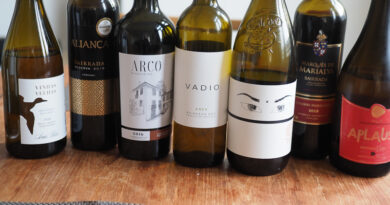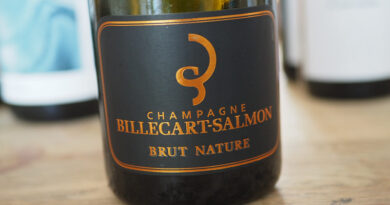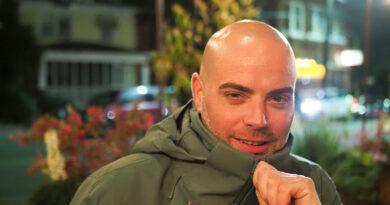The ageing potential of Sauvignon Blanc: Sancerre and Bordeaux over three decades
This was an interesting tasting, looking at the two top examples of Sauvignon Blanc ageing over three decades.
In the Bordeaux corner, we have Château Couhins-Lurton, from Pessac-Léognan. In the Loire corner we have Les Monts Damnés from Henri Bourgeois in Sancerre. Both wines are from different regions (although limestone is a commonality), and both have different élevage, with Couhins-Lurton fermented and aged in small oak (one-quarter new), and Mont-Damnés aged in stainless steel. But both develop beautifully in bottle.
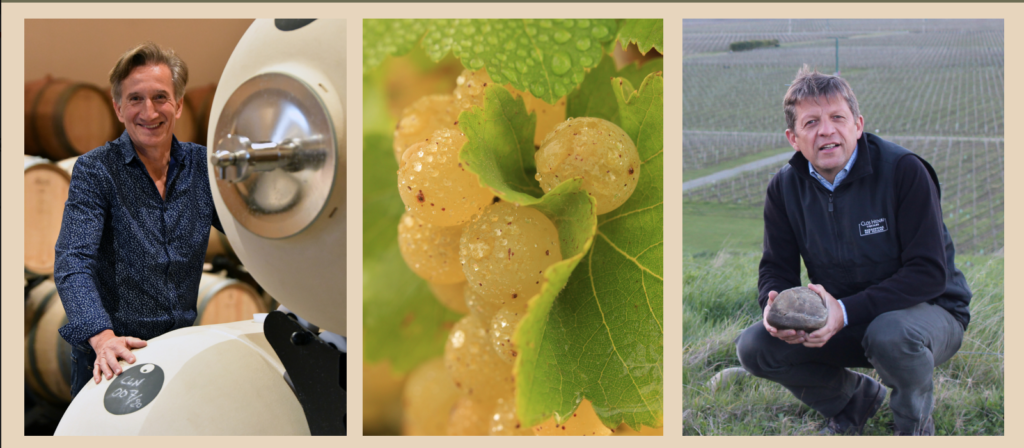
Jacques Lurton introduced Couhins-Lurton, which is based in the north of Pessac. This is the only white wine classified as a single estate in Bordeaux, he says. The soil is unique: it’s limestone in a region better known for its alluvial gravel soils. ‘This creates specific conditions for this variety to grow.’ There are 5.5 ha of white grape varieties here, and it is one of the best examples of what Pessac can make as a white wine.
Jacques explained the benefits of this terroir. In particular, the limestone brings to grapes a low pH. The grapes ripen but the pH remains low and the level of acidity is high. This allows Couhins-Lurton age well and keep their fresh aromas. Jacques recently returned to Bordeaux from various outposts of the family’s winemaking empire. ‘Since I have been in charge I’ve tried to develop new technologies from my work in the new world.’
Arnaud Bourgeois works with his well-known family winery based in Chavignol. This is one of the 14 villages in the Sancerre appellation, and it’s famous for its goat cheese. It also has a famous slope: Côtes de Mont Damnes. ‘It’s a very specific slope that is based on Kimmeridgian marl,’ says Arnaud. The Bourgeois family also planted a vineyard in Marlborough 20 years ago – Clos Henri – with Sauvignon Blanc and Pinot Noir. His cousin, brother and father work with him in Chavignol.

‘Over time we have developed tools to help us obtain the best results, especially with a gravity fed winery,’ says Arnaud. ‘We have five different levels, which gives the best care from the time we receive the fruit at the winery until bottling.’ They farm organically and are converting the whole vineyard, although they have been working organically since 2008. They have limestone, clay and flint soils. But the Mont-Damnes is Kimmeridgian marl from the Jurassic period, which is also found in Chablis and Champagne.’ Density of planting is 6600 vines/hectare, whereas at Couhins-Lurton it is 8000 vines/hectare. The main difference between the two properties would be the climate of the region, and also some differences in the soil.
‘I really believe that the climate has a specific effect on the vintages,’ says Arnaud. ‘There is a relationship between the wine flavour and whether it was a warm or cold vintage. Of the three vintages here the coldest was 1996. When the vintage is cold there are more reductive flavours like truffle or asparagus. If we have a warmer vintage, like 2006, there are more oxidative flavours, like candy fruit and honey. The Sauvignon Blanc is quite interesting because it enhances the flavour of the vintage.’
These wines have aged beautifully. They are pristine and fresh, but there are differences between them. Normally people think of Sauvignon Blanc as an early maturing wine, but something different is happening here. What is it about these wines that confers on them the ability to age?

‘I think it is a mixture of a lot of things,’ says Jacques. ‘For sure, as winegrowers, we all know that the terroir is the major component for allowing wine to age over time. The aging of the wine proves the quality of terroir: only time will tell. Sometimes you have wines that are quite closed in the early stages of their life and they develop over time. This is what we have found thanks the long-term experience of people before us. Low pH makes white wines able to age extremely well.’
Arnaud agrees. ‘With low pH we have a wine with a very good backbone. This gives the possibility of the wine to age in good conditions. On top of that, it is important to have top quality fruit. You can be a magical winemaker doing extremely good practices in the winery, but if you don’t have [the right] terroir you are not going to make wines that age as well as those we are tasting today. A wine will never get better due to winemaking practices.’
So if you are making a wine that has the potential for ageing, and that’s your intention, do you have to think about this and do something different in the winery? Do you have to compromise the early drinkability of the wine?
‘We consider that we need to pick the fruit at the best time to make sure the wine will have the best expression,’ says Arnaud. ‘For example, we don’t do malolactic fermentation. This will create a level of acidity that would be lower.’ He says that he doesn’t deliberately do anything in the winery to make the wine longer-lived. ‘We don’t influence the winemaking with the idea that it can potentially age,’ says Arnaud. ‘It’s more that we respect the fruit and do as little as possible. We age in stainless steel tanks on fine lees. We make sure we give the wine enough “food” for it to age properly.’
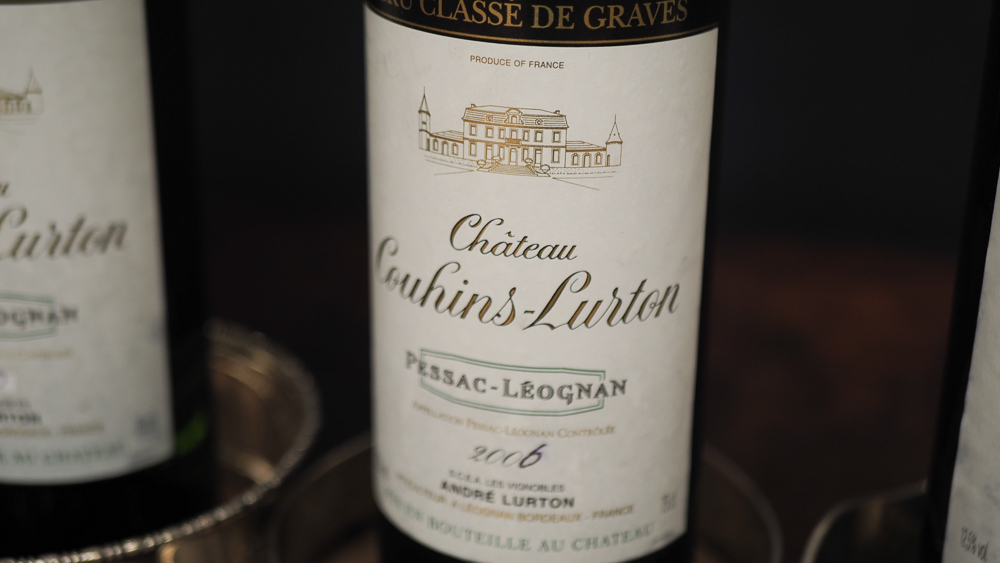
‘I have a slightly different opinion,’ says Jacques. ‘First, we have nothing to prove about the terroir: someone has done it before us.’ This is a region known for making long-lived Sauvignon Blanc. ‘Sauvignon is a special variety,’ he says. ‘This variety has so many moments of its life when it can express its quality. When you look to make a high quality wine, as we are doing here, you try to get the ripeness that you expect for the style of this wine. We taste the grapes and find the moment that the winemaker has in mind, that is the right moment to start picking grapes. Then we pick within a day. Then there is all the technology needed: white wines are extremely sensitive to a lot of parameters.’
The grapes are processed immediately. And he says that while the terroir is what confers the ability to age on these wines, the winemaker has to have in mind ageability, but also they have to keep the consumer in mind. ‘I want customers to be able to drink our wine in the early days. Many people don’t consider white wines to be able to age. It’s important that the wines are drinkable in the early years after bottling. All the tricks of our winemaking allow this, without forgetting that this wine needs to be able to age for those who will cellar it.’
With white wines, if you are making them for ageing, the decision at pressing stage is quite important. If you don’t want to emphasize the aromatics, but you want a wine to age, does it alter how you deal with the phenolics? If you press and protect the must, the phenolics remain in the wine and can make it more liable to oxidise later. If they are oxidised out at juice stage, then presumably you lose some aromatics but gain longevity. So how much do they protect the must?
‘If we were talking about Chardonnay, this would be a very different discussion,’ says Jacques. ‘For Sauvignon you have to be extremely technical. We have found that we have to protect our grapes against oxygen. Traditionally, for these wines we pick the grapes and process them straight away. We only pick in the morning. We do add some carbon dioxide and the juice is transferred to the tank under nitrogen sparging. We protect the grapes and juices against oxidation. One new thing that we have been doing is press separation. We chill the grapes overnight and press at 8 C, then the free-run goes straight into the tank under gas protection, but the pressings are oxidised and then reintroduced a day later. All these phenolics, which are mostly in the pressings, are precipitated in the bottom of the tank overnight, and the following morning only the clear juice is taken. This allows us to avoid phenolics.’ But he adds, ‘these wines we are tasting today haven’t been made like this: they have been fully pressed up to the pressing limit under gas protection. The erosion of the colour is typical of wines that have been protected during their processing.’
Arnaud takes a slightly different approach. ‘In our case, in Sancerre, we do not protect our juices. If we pick the fruit early in the morning the grapes are going to be cold enough and we press in classic pneumatic presses. We don’t use Inertys which protects the fruit during pressing: we did some experimentation and we weren’t very happy with that. We came to the conclusion that it is important we add enough oxygen to the juices. We prefer to protect the juices when they are in the tank for settling. We leave them for two to three days and the oxidized phenolics are going to settle in the tank and we get rid of them. What is very important is to have a short time between the picking time and pressing. We have 20 minutes between picking and pressing: this is very quick. We have enough presses to do this. At the same time, we take one risk: we don’t add sulfur dioxide between picking and bottling. Alcoholic fermentation takes place and we keep the wine on fine lees for about 7 or 8 months with no sulfur dioxide added.’
And then there’s the closure, which impacts post-bottling development. Jacques is a believer in screwcaps. ‘Technology has enriched us,’ he says. ‘The closure is important. I am a fan of screwcaps. Our father decided in 2003 to put half of his Pessac-Léognan whites under screwcap and the other under cork.’ He has therefore got comparisons of cork versus screwcap, and the 2006 here demonstrates how wine can age under screwcap. ‘I believe all our white wines should be under screwcap. I trust this closure very much.’
‘I agree with Jacques that screwcap is a wonderful closure,’ says Arnaud. ‘We have to see the reality in front of us: it is so difficult to manage traditional cork. It is unfortunate that we have a lot of issues and a lot of variability. Screwcaps offer more stability.’ In New Zealand they use screwcap for their Pinot Noir and Sauvignon Blanc at Clos Henri. ‘In Sancerre we do use screwcap as well, but up to now we didn’t consider it would be good for ageing. But we were surprised that screwcap can also give a lot of capabilities to age in good condition. Just one thing is that the wine is a bit more reductive, so it is important to take this into consideration if you want to age the wine. DIAM is an interesting closure, but I am worried for the future of natural cork.’
Old Sauvignon is quite a unique style of wine, and it deserves its place in the peer group of fine white wines. ‘Today, most people consider Chardonnay to be the white variety that makes great wines that can age over time,’ says Jacques. ‘But I think that Sauvignon Blanc has something to offer. Sancerre and Pouilly-Fumé have nothing to prove because they have done the job. What is interesting with Sauvignon Blanc is that it can age with purity: these wines are not fat, or extremely rich, but they have a beautiful elegance and purity.’
‘1996 was a cool year, but it was also a wet year,’ says Jacques, ‘and we had a fair amount of botrytis in our grapes. This pushed us to have a serious selection in the vineyard. 2006 was a warm vintage but thanks to the limestone we still had a low pH in the vines. In terms of full expression, in Pessac-Leognan it is very much on the chamomile style, with peach, pear and apricot, and citrus.’
Will the style of wines change as the climate gets warmer, and is there anything that can be done in the vineyard that is different, and builds resilience in the face of climate chaos?
We have changed our practices, and not only for white grapes,’ says Jacques. ‘Sauvignon is a variety for cool climates, and it doesn’t like the heat. Especially the overnight heat that tends to lower the level of acidity, and transfers the citrus aromas into terpene aromas. It completely changes the profile of the Sauvignon Blanc. We allow a little bit more vigour in our vineyards because Sauvignon reacts to vigour. It is sensitive to the nitrogen content. We don’t leaf pluck at all but we have to be really careful about the positioning of the grapes along the cane because it is extremely sensitive to botrytis. This is one of our problems. We have some periods of heavier rains, and the way we have planted our vineyards to allow them to ripen 30 or 40 years ago is not the same as today. They are so close to the ground they get moisture and humidity, and we have to be very careful to managing our grapes today. Maybe our practices are not the right practices to produce Sauvignon Blanc for the next 30 or 40 years.’
In Sancerre we are in the centre of France 200 km south of Paris, with a continental climate. We are impacted by global warming but not as much as other regions. We give more vegetation to protect the fruit during maturation. There is less leaf plucking and also we pay attention to pick the fruit right at the correct time. If we are one or two days late the fruit goes to a different universe of flavours: we are talking of terpenes, honey and candied fruit, which is not what we expect of Sauvignon Blanc. It is important not to be to early, also, when we would have vegetal characters.
Sauvignon is highly sensitive to ESCA, a trunk disease. Is there much that can be done about this?
This is definitely a problem,’ says Jacques, ‘but for me it is not such a problem with Sauvignon Blanc because it is a variety where it’s not so important to have old vines. It’s a variety that needs a bit of vigour. With old vines of Sauvignon Blanc you tend to lose something of the variety. ESCA pushes us to renew our vines earlier than we would like, but that’s the only inconvenience. It is more a problem for our red vines.’
In Sancerre and Pouilly-Fumé ESCA is an issue,’ says Arnaud. ‘We have to fight against it. We try to preserve old vines. We can replant the contaminated vines, but we prefer to do everything to give a second life to those affected. We go with a chainsaw and cut inside the vine to remove the contaminated part. It’s called curettage, and it’s a way to save old vines. We are also trying to prune a better way.’
THE WINES
Château Couhins-Lurton 1996 Pessac-Léognan, Bordeaux, France
This is complex and powerful with lime, honey and some lemon on the nose. Refined, crystalline and very expressive with lemons and some subtle toasty notes. There are hints of truffle, too. Very fine. 97/100
Château Couhins-Lurton 2006 Pessac-Léognan, Bordeaux, France
Fresh and linear with bright, crisp, crystalline citrus fruits, as well as lovely precision. This is very fine, pure and linear. 94/100
Château Couhins-Lurton 2015 Pessac-Léognan, Bordeaux, France
Very fine with nut and grapefruit, a touch of smoke and fine spiciness. This is crystalline and juicy with some mineral character. Very refined. 94/100
Henri Bourgeois Sancerre 1996 Les Monts Damnés Loire, France
Exotic nose with grapefruit and mandarin: very expressive. There’s a tropical edge and even some pineapple, as well as lovely citrus fruit. Quite profound. There’s still lots of fruit here, and also a subtle cabbage note. 96/100
Henri Bourgeois Sancerre 2006 Les Monts Damnés Loire, France
This is textural and fine with lovely mineral character. Good precision here with fine citrus fruit and a stony, mineral edge. Very fine. 94/100
Henri Bourgeois Sancerre 2015 Les Monts Damnés Loire, France
Bright, linear and highly aromatic. Crystalline with a lovely mineral edge. So direct with good concentration and also purity. Very fine. 95/100
Find these wines with wine-searcher.com


